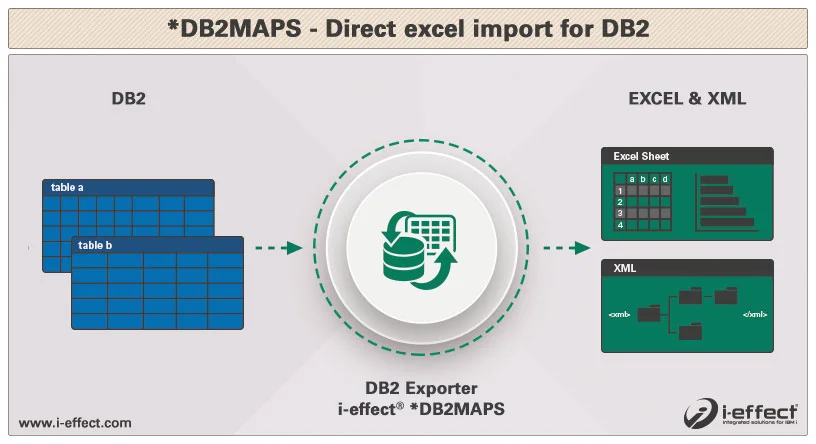Glossary
EDI projects require a wide variety of specialized knowledge. In our glossary, we provide answers to most of the terms you may encounter in your EDI project.

You can use the i‑effect® *DB2MAPS module not only to export DB2 database contents, but also to translate them into a custom Excel or XML file structure or format, according to mapping rules. These freely definable database mappings can be used to separate database fields into various columns and rows, as well as headlines, sub headlines, subtotals etc. Likewise, i‑effect® *DB2MAPS can export database exports into nested items and attributes of an XML file.
User-defined Style
When converting to Excel, XML, and HTML formats, user defined styles can be used. Styles, which can be stored permanently on the system, can be applied to individual data fields and also specific data groups (headings, titles etc.). Styles contain attributes that determine the visual appearance such as font color, font, and background color. In addition, field attributes are also determined by styles, so that the column width can be set and numerical or alphanumerical fields are correctly formatted. In particular, date and time data, and also currency and number formats can be individually defined and applied.
Conditional Formatting
Conditional formatting offers a further possibility of content dependent formatting and dynamic creation of visual appearance. By specifying rules for formatting, it is possible to render all the negative numerical values in a column red and all headings in bold print. Even changes of font and color can be defined depending on the existing data.
Elimination of Errors and Employee Motivation
Push technology is another unique selling point of *DB2MAPS and *DBEXPORT: Users will find database information completely processed report and are free from
error-prone, monotonous, routine database queries.
Because PC-initiated imports are no longer needed, members of specialists departments such as production, sales, customer relation etc. are no longer dependent on the IT department.
Employees are motivated to better productivity by the convenient delivery of information. The profitability of current data is not lost because of delayed data delivery.
